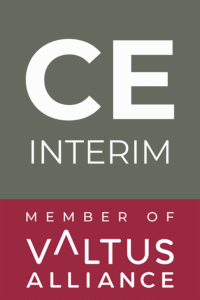Non avete abbastanza tempo per leggere l'intero articolo? Ascoltate il riassunto in 2 minuti.
Ristrutturare un'azienda non è mai facile, e quando si tratta di navigare nei complessi mercati dell'Europa centrale e orientale (CEE), la sfida diventa ancora più ardua.
Per i dirigenti tedeschi, la diversità dello sviluppo economico, dei quadri normativi e delle dinamiche culturali dei Paesi CEE può rendere questo compito particolarmente complicato. Tuttavia, con le giuste strategie e la giusta mentalità, è possibile non solo guidare l'azienda nei momenti difficili, ma anche gettare le basi per il successo futuro.
In questa guida esploreremo le strategie e gli spunti di riflessione specificamente pensati per i dirigenti tedeschi incaricati di ristrutturare le aziende della CEE, per garantire che riescano a destreggiarsi efficacemente tra le complessità della regione.
Sia che stiate affrontando una crisi economica sia che stiate cercando di ottenere una maggiore efficienza, questi spunti vi aiuteranno a guidare un cambiamento significativo e a uscirne rafforzati.
Comprendere il panorama economico della CEE
L'Europa centrale e orientale è una regione ricca di contrasti. Da un lato, ci sono mercati maturi come la Polonia, l'Ungheria e la Repubblica Ceca; dall'altro, economie in via di sviluppo come la Romania e la Bulgaria. Questa diversità richiede un approccio sfumato alla ristrutturazione: ciò che funziona in un paese potrebbe non funzionare in un altro.
In qualità di dirigente tedesco, la vostra profonda conoscenza del panorama economico tedesco e dei PECO è la vostra arma segreta. Sfruttando i forti legami economici della Germania con i Paesi dell'Europa centrale e orientale, potrete avere un vantaggio nell'elaborazione di strategie efficaci e culturalmente sensibili.
Ma non si tratta solo di capire le economie: si tratta di capire le persone. I legami culturali tra Germania e CEE sono forti, ma ci sono ancora differenze che possono influire sul modo in cui le vostre strategie vengono accolte.
Essere consapevoli di queste sfumature può fare la differenza nel successo o nel fallimento dei vostri sforzi di ristrutturazione.
Assumere la guida della ristrutturazione: Il vostro ruolo di dirigenti tedeschi
La ristrutturazione non è solo un compito sulla lista delle cose da fare, ma una sfida di leadership. Richiede di prendere decisioni difficili che determineranno il futuro della vostra azienda.
In qualità di dirigente tedesco, portate in tavola un livello di disciplina e precisione molto apprezzato. Ma nella regione CEE, dove gli stili di leadership possono essere più gerarchici, dovrete adattare il vostro approccio.
Ricordate che la leadership nei PECO può richiedere una comunicazione più diretta e una chiara autorità. Questo non significa abbandonare l'approccio collaborativo tedesco, ma piuttosto rafforzarlo con il rispetto delle abitudini locali.
Quando il vostro team vede che capite e rispettate il loro modo di lavorare, è più probabile che si fidino di voi - e la fiducia è essenziale in qualsiasi sforzo di ristrutturazione.
Navigare nelle crisi economiche: Trasformare le sfide in opportunità
Le crisi economiche possono colpire duramente i mercati della CEE. Questi periodi di incertezza sono duri, ma rappresentano anche un'opportunità per ripensare, rimodellare ed emergere più forti.
A) Valutare il flusso di cassa e la liquidità:
In tempi incerti, il contante è il re. Non lasciate nulla di intentato: analizzate il vostro flusso di cassa con lo stesso rigore che applichereste in Germania. Non si tratta solo di trovare inefficienze, ma di sopravvivere. Ogni euro risparmiato oggi è un passo verso la stabilità di domani.
B) Razionalizzare le operazioni:
Efficienza non significa tagliare gli angoli, ma fare di più con quello che si ha. Cercate di centralizzare funzioni come le risorse umane o gli approvvigionamenti nelle vostre operazioni CEE. In questo modo si possono ridurre le spese generali mantenendo, o addirittura aumentando, le prestazioni.
C) Ristrutturare il debito in modo oculato:
Il debito può essere sia un'ancora di salvezza che un peso. Nei Paesi dell'Europa centrale e orientale, dove le aziende si affidano spesso al finanziamento del debito, la rinegoziazione dei termini o persino il rinvio dei pagamenti possono far guadagnare il tempo necessario per attuare i cambiamenti. Collaborate con le istituzioni finanziarie locali che comprendono le pressioni uniche della regione.
Efficienza operativa: Il cuore pulsante di una ristrutturazione di successo
Nella ristrutturazione delle aziende CEE, l'efficienza operativa è più di una parola d'ordine: è una necessità per la sopravvivenza.
Nel contesto CEE, si tratta di trovare modi innovativi per ridurre i costi mantenendo, e talvolta addirittura migliorando, la produzione.
A) Tecniche di Lean Management:
Il Lean non è solo per la produzione: è una mentalità. Concentrandosi sull'eliminazione degli sprechi - sia che si tratti di produzione in eccesso, di personale in esubero o di flussi di lavoro inefficienti - è possibile ridurre i costi in modo significativo. Basti pensare ad aziende come Volkswagen, che hanno utilizzato gestione snella con grande efficacia nelle loro operazioni nei PECO.
B) Abbracciare l'automazione e la digitalizzazione:
La tecnologia è vostra amica. Automatizzare le attività ripetitive non solo fa risparmiare tempo, ma libera anche risorse per iniziative più strategiche. Certo, c'è un costo iniziale, ma i guadagni a lungo termine in termini di agilità ed efficienza valgono la pena.
C) Ottimizzare la forza lavoro:
Non limitatevi a tagliare i posti di lavoro: investite nel vostro personale. L'aggiornamento della forza lavoro per assumere ruoli più strategici può trasformare l'azienda. Le aziende tedesche investono da tempo nella formazione professionale e questo approccio può dare grandi risultati nei Paesi dell'Europa centrale e orientale, dove la manodopera qualificata è una risorsa fondamentale.
Riduzione strategica dei costi: Oltre l'ovvio
La riduzione dei costi è necessaria, ma deve essere intelligente e strategica. La semplice riduzione dei bilanci non è sufficiente: bisogna pensare a lungo termine.
A) Ottimizzare la catena di approvvigionamento:
Nella CEE le catene di approvvigionamento possono essere frammentate. Il consolidamento e la razionalizzazione della catena di fornitura possono ridurre i costi e migliorare l'efficienza. Collaborate con fornitori regionali che conoscono le dinamiche del mercato locale e possono offrire vantaggi competitivi.
B) Esternalizzare con saggezza:
L'outsourcing non è solo una questione di riduzione dei costi, ma anche di sfruttamento delle competenze. Prendete in considerazione l'esternalizzazione di funzioni non essenziali come l'IT o l'assistenza clienti in paesi CEE o balcanici a basso costo. In questo modo potrete concentrarvi su ciò che sapete fare meglio, beneficiando al contempo delle conoscenze locali.
C) Investire nell'efficienza energetica:
I costi dell'energia possono essere imprevedibili, soprattutto nella CEE negli ultimi anni. Investire in tecnologie ad alta efficienza energetica non solo riduce i costi, ma posiziona la vostra azienda come leader nella sostenibilità, una priorità crescente nella regione. Non dimenticate di utilizzare tutti i sussidi UE disponibili in ogni Paese.
Navigare in acque legali e regolamentari
La ristrutturazione nei PECO non comporta solo cambiamenti operativi, ma anche la necessità di navigare in un complesso panorama legale. Ogni Paese della regione ha le proprie leggi e la conformità non è negoziabile.
A) Comprendere le leggi locali sul lavoro:
Le leggi sul lavoro nei PECO variano notevolmente. Ad esempio, l'Ungheria ha regole severe sui licenziamenti, mentre la Polonia è più flessibile. Conoscere queste differenze è fondamentale quando si pianifica una ristrutturazione.
B) Garantire la conformità all'UE:
La regione CEE fa parte dell'Unione Europea, il che significa che dovete rispettare le normative europee, dalla privacy dei dati agli standard ambientali. Assicurarsi che la vostra ristrutturazione sia in linea con queste normative vi eviterà grattacapi legali in futuro.
Costruire la resilienza: Prepararsi al futuro
La ristrutturazione non serve solo a superare il presente, ma a costruire un'azienda che possa prosperare in futuro. Una volta completata la ristrutturazione, spostate la vostra attenzione sulla costruzione della resilienza.
A) Investire nella tecnologia:
La tecnologia non serve solo per l'efficienza, ma anche per la crescita. Le imprese tedesche che hanno investito nella trasformazione digitale nei Paesi dell'Europa centrale e orientale hanno registrato non solo un miglioramento della produttività, ma anche un più rapido adattamento ai cambiamenti del mercato.
B) Sviluppare la forza lavoro:
Una forza lavoro forte è il vostro bene più prezioso. Dopo la ristrutturazione, investite in programmi di formazione continua per garantire che il vostro team sia pronto per qualsiasi cosa accada.
C) Abbracciare la sostenibilità:
La sostenibilità non è solo una tendenza, è il futuro. Integrando le pratiche sostenibili nelle vostre operazioni, non solo riducete i costi, ma allineate anche la vostra attività alle aspettative in evoluzione dei consumatori e delle autorità di regolamentazione.
Conclusione
La ristrutturazione delle aziende CEE è un processo complesso e impegnativo, ma anche un'opportunità. In qualità di dirigente tedesco, avete la capacità unica di apportare la precisione, l'efficienza e la leadership necessarie per guidare un cambiamento significativo.
Comprendendo il panorama locale, guidando con spirito di adattamento e concentrandosi sulla resilienza a lungo termine, potete guidare le vostre attività nei PECO attraverso queste sfide e verso un futuro più prospero.
A CE InterimSiamo specializzati nel fornire servizi di gestione ad interim, aiutando le aziende a superare queste transizioni critiche. È il momento di agire: sfruttate le vostre competenze, accettate la sfida e guidate la vostra azienda al successo nella dinamica regione CEE.






Buon articolo
Buone informazioni